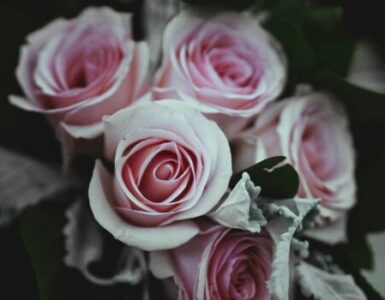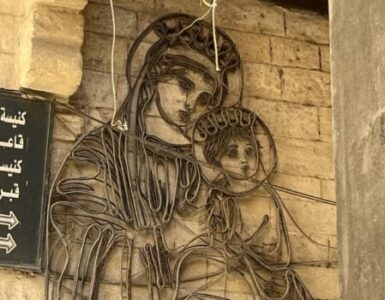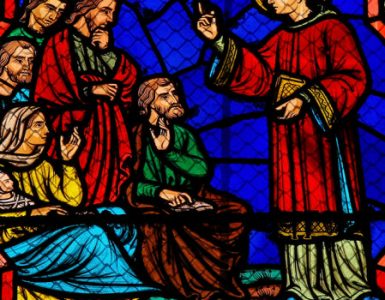“The world is charged with the grandeur of God,” Father Gerard Manley Hopkins, S.J. wrote perceptively in his poem, “God’s Grandeur”. His words express the Catholic idea that everything in creation reflects God and leads us to God. This idea is revealed in Sacred Scripture. For example, in the Book of Wisdom, “For from the greatness and beauty of created things their original author, by analogy, is seen.” (Wisdom 13:5)
St. Paul wrote in his Letter to the Romans about how we can come to know God through His creation. “Ever since the creation of the world, his invisible attributes of eternal power and divinity have been able to be perceived and understood in what he made.” (Romans 1:20) This idea was later taught by St. Bonaventure, a Franciscan Doctor of the Church, who wrote in The Soul’s Journey to God, “The Creator’s supreme power, wisdom, and benevolence shine forth in created things…”
I always feel very close to God whenever I am outdoors, surrounded by all He created. The trees’ light green leaves in the early spring and the greenness of the grass reminds me of the gift of life God has given us. Mountains reminds me of the greatness of God and of the times Jesus went up to the mountains to pray. When I saw lambs on high hills during my visits to Northwest England, I immediately recalled that Jesus is both the Lamb of God and our Good Shepherd, and that we are like lambs and sheep, needing to rely on Him to take care of us. Wildflowers, my favorite flowers, are special to me because no person planted them; they seem to have been directly planted by God. When I see wildflowers and birds, I also recall Jesus’ lesson to His disciples about trusting in God’s Providence. (Matthew 6:25-34)
I first learned about the Catholic way to see creation in the writings of Archbishop Fulton J Sheen. He often wrote about the idea that everything in the world is sacramental – – symbolizing some aspect of God. In The Life of All the Living, he explained, “Everything is and should be a stepping stone to God. Sunsets should be the means of reminding us of God’s beauty as a snowflake should remind us of God’s purity.”
Seeing the beauty and goodness of God’s creation can also inspire us to thank and praise Him, as St. Francis of Assisi did in his “Canticle of the Sun,” in which he praised God for such aspects of creation as the sun, moon, stars, wind, and water. I, too, feel gratitude for what God has created. When I see a beautiful flower, a tranquil lake, a majestic tree, a lively robin, a cute wild rabbit, or anything that is good or beautiful, I turn to God and thank Him for creating it and for giving me the opportunity to see it.
If Catholics rediscover a more contemplative, poetic way of perceiving the natural world, it could increase their awareness of the power of God, His Providence, and His love. We can help others to see beyond the beauty of nature to find God, who created nature and humans, and loves us. As Archbishop Sheen wrote: “… God made the world according to such a plan that we were constantly to be ‘seeing through things’ to Him, the Power, the Wisdom, the Beauty, and the Source of all that is.” (Moods and Truths) This Catholic outlook is different from a secular outlook– which sees things from a materialistic viewpoint. For example, a real estate developer might see a field as something to be turned into a warehouse or a shopping mall; a botanist might see flowers as needing to be classified, paying little attention to their beauty; an environmentalist might see nature as in danger of destruction by humans. They all see God’s creation, but they may be unaware of God.
In The Soul’s Journey Into God, St. Bonaventure wrote that the first two stages of the ascent to God are by contemplating Him through what St. Bonaventure called God’s “vestiges” or footprints in creation, and by contemplating God in His vestiges through our senses. Some of the properties of the created world that St. Bonaventure described were magnitude (length, width, depth), multitude (diversity of substance, or structure), and beauty (variety of light, shape, and color). The vast depth of an ocean shows us magnitude. The great variety of animals and plants throughout the world are examples of multitude. The golden-yellow color of sunflowers display beauty. Not only can our vision lead us to perceive God’s vestiges in creation, but our other senses can lead us to Him as well. For example, in hearing birds sing or smelling the scent of roses. As St. Bonaventure wrote, “The creatures of the sense world signify the invisible attributes of God.”
People are God’s greatest creation. They are created in God’s image and likeness, and reveal some of His attributes, such as His love, goodness, intelligence, generosity, and wisdom. We are drawn to the saints because they particularly reflect the goodness and love of God in their lives.
In Moods and Truths, Archbishop Sheen wrote that poets and saints are gifted with the ability to see through created things to God. “Poets are those who have been richly endowed with a sense of the invisible, who can look out upon exactly the same phenomena that other mortals take seriously, and see in them something of the Divine.” Even people who are not poets can learn to develop the perspective of a poet when seeing God’s creation. Archbishop Sheen described saints as having an even greater gift than poets. “A saint, then, is one who has learned to spiritualize and sacramentalize and ennoble everything in the world, and make of it a prayer.” (Moods and Truths)
As we also aspire to be saints, we can learn from the saints how to experience the world in a way that makes us always aware of God and leads us to prayer. In order to develop this poetic, contemplative outlook, we need to pray and ask for God’s help, as St. Bonaventure recommended. We also need to spend some time in silence, without talking, television or podcasts. It is through prayer, silence, and time alone with God, that we will learn the lessons He wants to teach us through His created world.
✠
Photo by Timeo Buehrer on Unsplash












